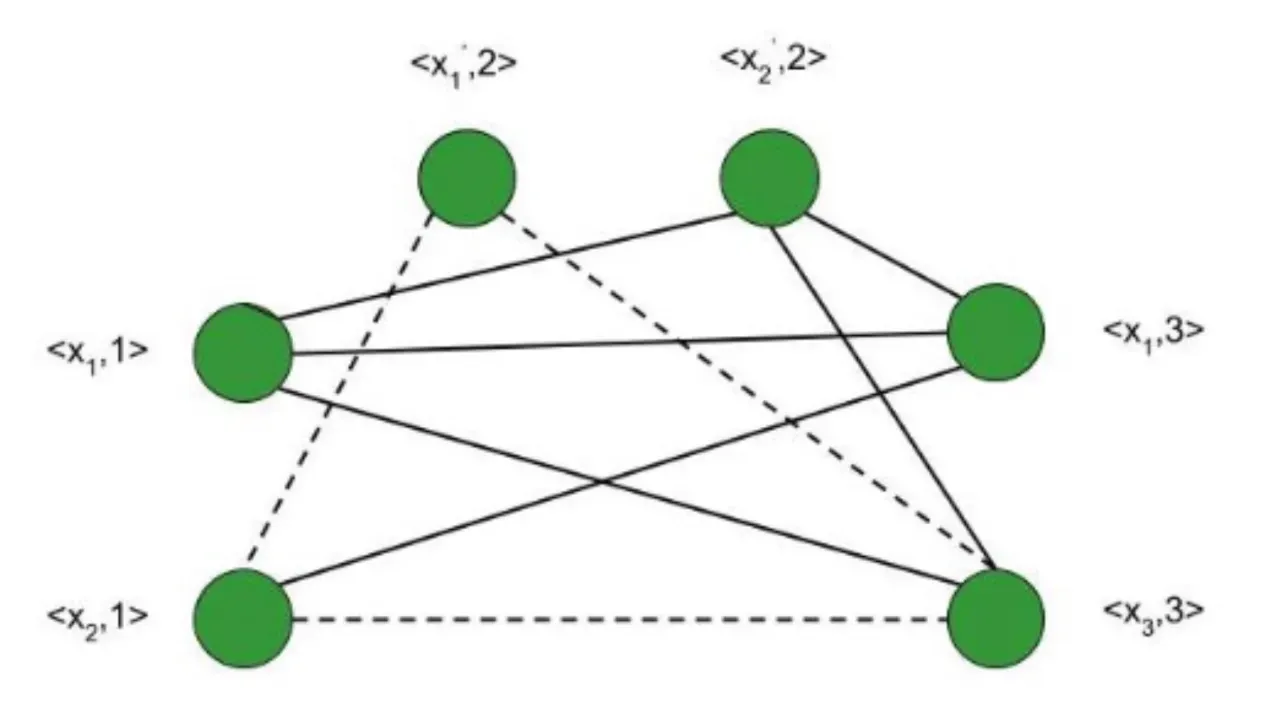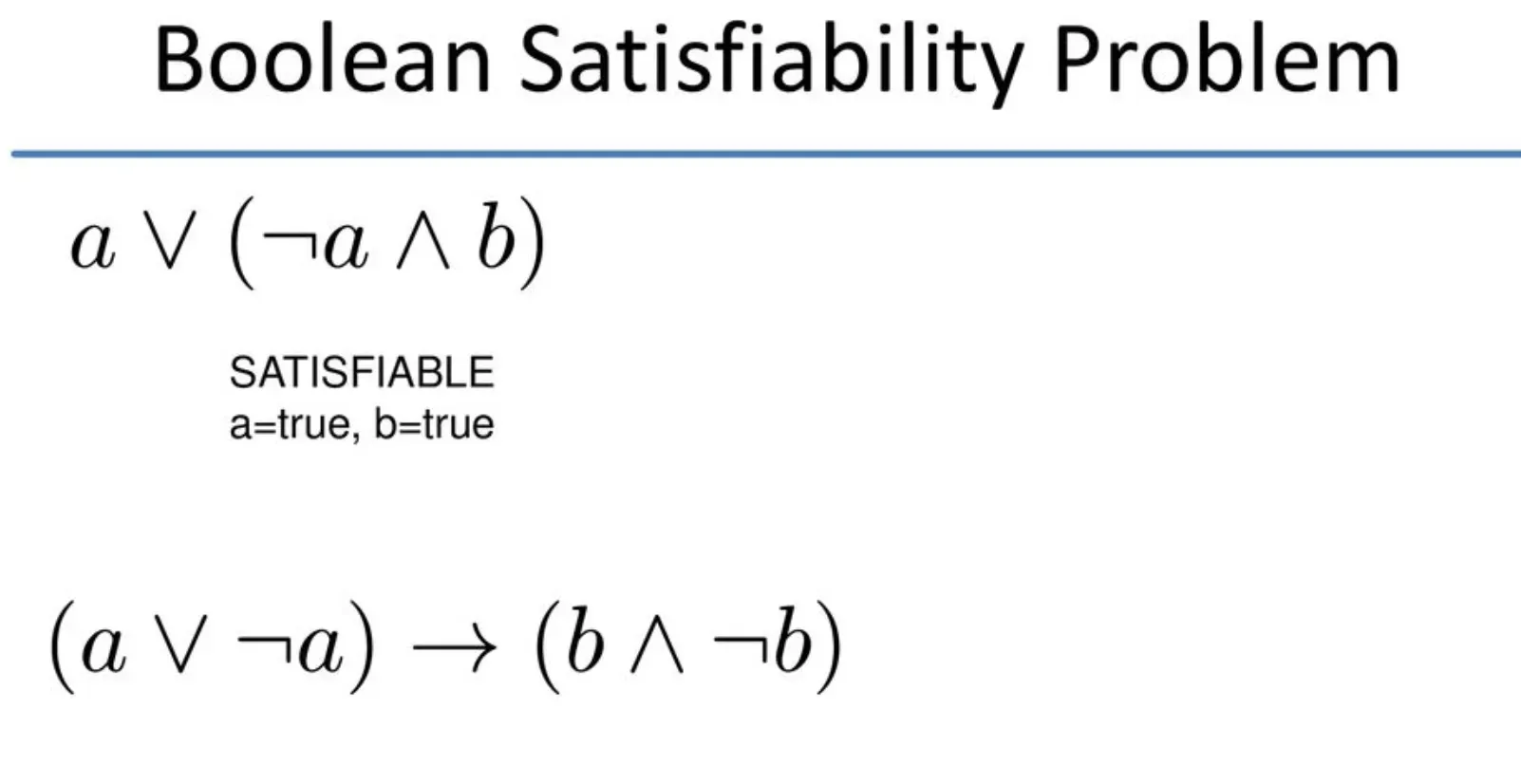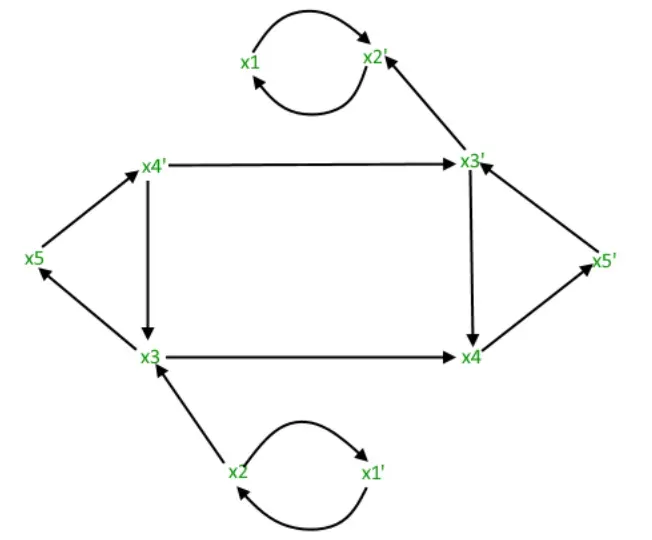What is the Boolean Satisfiability Problem?
Let's kick things off by defining the basics of what exactly the Boolean Satisfiability Problem is.
Definition
The Boolean Satisfiability Problem (SAT) is a decision problem regarding logical validity. It asks if there exists, for a given set of Boolean variables and a Boolean formula, a feasible assignment of truth values that would make the formula true.
Problem Statement
The problem statement for the Boolean Satisfiability Problem is normally expressed in conjunctive normal form (CNF), which is a conjunction of one or more clauses, where a clause is a disjunction of literals (Boolean variables or their negations).
Importance in Computer Science
SAT is fundamental in computer science as it was the first problem proven to be NP-complete. As such, it serves as a baseline for evaluating the difficulty of other computational problems in NP.
Core Concepts
Key concepts involved in SAT are literals, clauses, satisfaction, and unsatisfaction – all basic terms in propositional logic that help in understanding the problem.
Applications
SAT has wide-ranging applications in areas such as artificial intelligence, hardware and software verification, planning, scheduling, and even game theory.
Why is the Boolean Satisfiability Problem Important?
Now that we know what SAT is let's explore why it holds such weight in the field of computer science and beyond.
NP-completeness
Being the first problem to be proven NP-complete, SAT serves as the foundation for computational complexity theory, establishing a framework for identifying hard computational problems.
Benchmark Problem
Due to its NP-completeness, SAT is often used as a benchmark problem to infer the difficulty level of several other computational problems in NP class.
Basis for Algorithms
Many algorithmic techniques, including backtracking, branch-and-bound, and various heuristics, have been developed based on SAT, providing significant development in the field of algorithms.
Logical Reasoning
Because it centers on logical validity, Boolean Satisfiability Problem is crucial in areas requiring logical reasoning, widely employed in formal methods and theorem proving.
Pervasiveness in Real-World Problems
Many practical problems in computer science can be modeled as SAT instances, making solutions to SAT relevant and beneficial for other domains as well.
When was the Boolean Satisfiability Problem Identified?
Get to know the birth and evolution of the Boolean Satisfiability Problem in the context of computing history.

Early Beginnings
The genesis of propositional logic, wherein SAT resides, goes way back to the philosophies of Aristotle around the 4th century BCE. However, the formalization of such concepts in the modern sense of symbolic logic began only in the mid-19th century with George Boole.
Birth in Computer Science
SAT rose to prominence in computer science with the development of the theoretical framework for the 'P vs NP problem', wherein SAT was the first to be proven as NP-complete by Stephen Cook in 1971.
Evolution of Complexity Theory
From the 1970s and on, the understanding of SAT has profoundly influenced the development of complexity theory by providing pathways and techniques to classify and solve other NP problems.
Emergence of SAT Solvers
Since the start of the 21st century, there has been a steady development of efficient SAT solvers—programs that determine the satisfiability of propositional logic formulae—that find widespread practical use.
Current Developments
The study and development of various aspects related to SAT, such as faster algorithms and advanced solvers, continue to drive research in fields like artificial intelligence and formal methods.
Where is the Boolean Satisfiability Problem Used?
Find out the many areas in which the Boolean Satisfiability Problem finds impressive application.
Hardware Verification
In digital hardware design and verification, problems are often expressed as SAT instances for analysis. This can help identify design flaws or confirm the accuracy of digital circuits.
Software Testing
In software testing and verification, SAT algorithms are used to systematically explore different execution paths, helping in bug detection and ensuring software correctness.
Artificial Intelligence
SAT plays a significant role in artificial intelligence, including planning and reasoning, where problems can be modeled as SAT instances for efficient and automated problem-solving.
Cryptanalysis
In cryptanalysis, SAT is used to model and solve cryptographic problems to test the strength of encryption algorithms and develop new cryptographic techniques.
Modeling and Solving Other NP Problems
Many other NP problems (like the Traveling Salesman Problem or the Bin Packing Problem) can be transformed into SAT instances for solving, marking its universal applicability.
How is the Boolean Satisfiability Problem Solved?
Let's explore the various approaches and strategies employed to solve this crafty conundrum known as the Boolean Satisfiability Problem.

SAT Solvers
SAT solvers are computer programs that determine the satisfiability of a propositional logic formula. They embody different algorithmic strategies and have undergone continuous development, becoming significantly faster and more robust over time.
Algorithms for SAT
Various classes of algorithms, including backtracking, stochastic local search, and resolution-based methods, are employed to solve SAT problems. Each has its advantages, limitations, and suitable problem instances.
Heuristics in SAT Solving
Different heuristics such as choosing the most frequent variable or the literal that leads to the fewest clauses have been developed in SAT solving to guide the search process and improve efficiency.
Random Restarts and Clause Learning
Techniques like random restarts (randomly resetting the solver's state) and clause learning (learning new clauses from failed attempts) have proven remarkably effective in modern SAT solvers.
The DPLL Algorithm
The Davis-Putnam-Logemann-Loveland (DPLL) algorithm is a specific method developed for checking the satisfiability of propositional logic statements, and it forms the basis of many modern SAT solvers.
Best Practices in Boolean Satisfiability Solving
Understanding the right way to approach and solve SAT instances can make a significant difference.
Problem Simplification
Simplifying the problem whenever possible, either by removing redundant clauses or merging equivalent ones, often makes SAT instances easier to solve.
Appropriate Solver and Algorithm Use
Different SAT solvers and algorithms perform best on different types of problems. Therefore, understanding the problem and the strengths of the available solvers is crucial in achieving an efficient solution.
Solver Parameter Tuning
SAT solvers often come with various parameters that can be tuned. Tweaking these to suit your specific problem instance can result in enhanced solver performance.
Using Satisfiability Modulo Theories (SMT) Solvers
Sometimes, SAT solvers may not be enough, particularly when dealing with problems involving rich data types. In such cases, SMT solvers (which essentially generalize SAT solvers) might be the better choice.
Keeping Up With the Latest Research
The world of SAT is one of active research, and staying updated on the latest algorithms, heuristics, and solver improvements can provide an edge in SAT solving.
Challenges in Boolean Satisfiability Solving
Despite its pervasive use, tackling the Boolean Satisfiability Problem also poses certain sticky challenges.

Computational Complexity
The inherent difficulty of SAT, proven to be NP-complete, makes it computationally hard and time-consuming to solve, especially as the size of instances grows.
Problem Encoding
How a problem is encoded as an SAT instance can massively impact the efficiency of solving it. Finding the right encoding is a challenge due to the myriad ways a problem can be expressed.
Variability in Problem Types
SAT problems come in various types—from random to structured or industrial—and each type can behave differently with different solvers, adding to the complexity of solving SAT.
Handling Real-World Data
Real-world data, with its inherent noise and size, adds additional layers of challenge to SAT solving, thereby demanding the right algorithms, strategies, and robust solvers.
Solver Reliability and Performance
While modern SAT solvers have improved significantly, they may still be susceptible to bugs, memory leaks, or poor performance on certain types of problems.
Frequently Asked Questions (FAQs)
What Does the Boolean Satisfiability Problem (SAT) Entail?
The SAT problem involves determining if there exists an assignment of values to variables that makes the entire Boolean expression true.
Why is the SAT Problem Fundamental in Computer Science?
It's the first problem that was proven to be NP-complete, which has implications for fields like cryptography, algorithm design, and computational complexity.
How Does SAT Relate to Real-world Problem Solving?
SAT solvers aid in software verification, scheduling, and planning problems by efficiently searching solutions in complex systems.
What Are Some Techniques Used to Solve SAT Problems?
Algorithms like the DPLL algorithm and modern heuristic methods such as local search are some techniques for tackling SAT problems.
Does the Difficulty of SAT Problems Scale with Size?
Generally, as the number of variables and clauses increases, the SAT problem becomes more complex and difficult to solve.

